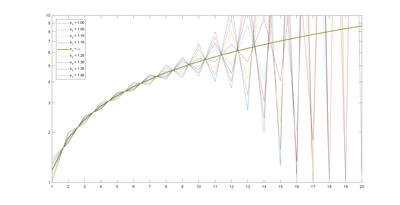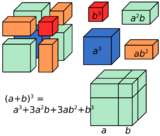Foias constant

In mathematical analysis, the Foias constant is a real number named after Ciprian Foias.
It is defined in the following way: for every real number x1 > 0, there is a sequence defined by the recurrence relation
- [math]\displaystyle{ x_{n+1} = \left( 1 + \frac{1}{x_n} \right)^n }[/math]
for n = 1, 2, 3, .... The Foias constant is the unique choice α such that if x1 = α then the sequence diverges to infinity. For all other values of x1, the sequence is divergent as well, but it has two accumulation points: 1 and infinity.[1] Numerically, it is
- [math]\displaystyle{ \alpha = 1.187452351126501\ldots }[/math].[2]
No closed form for the constant is known.
When x1 = α then the growth rate of the sequence (xn) is given by the limit
- [math]\displaystyle{ \lim_{n\to\infty} x_n \frac{\log n}n = 1, }[/math]
where "log" denotes the natural logarithm.[1]
The same methods used in the proof of the uniqueness of the Foias constant may also be applied to other similar recursive sequences.[3]
See also
Notes and references
- ↑ 1.0 1.1 Ewing, J. and Foias, C. "An Interesting Serendipitous Real Number." In Finite versus Infinite: Contributions to an Eternal Dilemma (Ed. C. Caluse and G. Păun). London: Springer-Verlag, pp. 119–126, 2000.
- ↑ Sloane, N. J. A., ed. "Sequence A085848 (Decimal expansion of Foias's Constant)". OEIS Foundation. https://oeis.org/A085848.
- ↑ Anghel, Nicolae (2018), "Foias numbers", An. Ştiinţ. Univ. "Ovidius" Constanţa Ser. Mat. 26 (3): 21–28, doi:10.2478/auom-2018-0030, https://digital.library.unt.edu/ark:/67531/metadc1705461/m2/1/high_res_d/18440835-Analele_Universitatii_Ovidius.pdf
- S. R. Finch (2003). Mathematical Constants. Cambridge University Press. p. 430. ISBN 0-521-818-052. https://archive.org/details/mathematicalcons0000finc. "Foias constant."
 |


